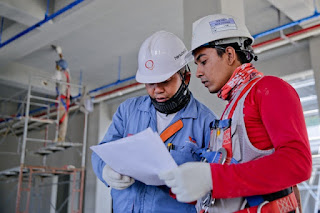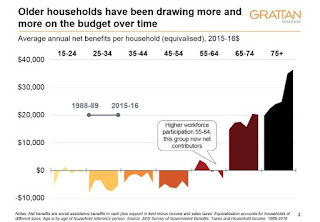Soft skills for work and employment to complement technical skills have been recently highlighted, again, by a Deloitte Australia media release, following is a summary.
The path to prosperity: Why the future of work is human, the latest report in the firm’s Building the Lucky Country series:
“That today’s jobs are increasingly likely to require cognitive skills of the head rather than the manual skills of the hands won’t be a surprise,” Rumbens said. “But there’s another factor at play. Employment has been growing fastest among less routine jobs, because these are the ones that are hardest to automate.”
More than 80% of the jobs created between now and 2030 will be for knowledge workers, and two-thirds of jobs will be strongly reliant on soft skills.
As work shifts to skills of the heart, Rumbens said the research reveals that Australia already faces skills shortages across a range of key areas critical to the future of work.
“These new trends are happening so fast they’re catching workers, businesses and governments by surprise,” Rumbens said.
At the start of this decade, the typical worker lacked 1.2 of the critical skills needed by employers seeking to fill a given position. Today, the average worker is missing nearly two of the 18 critical skills advertised for a job, equating to 23 million skills shortages across the economy.
Rumbens said that getting ahead of the game will require concerted action.
The report includes a series of checkpoints business leaders and policy makers, can use to inform, and drive action. These include:
For more articles and blogs about soft skills and adult learning click through.
 |
| Soft Skills for Work (Image copyright Pexels) |
‘While the future of work is human, Australia faces a major skills crisis - The right response can deliver a $36 billion economic bonus
12 June 2019: With skills increasingly becoming the job currency of the future, a new Deloitte report finds that the future of work has a very human face. Yet Australia is challenged by a worsening skills shortage that requires an urgent response from business leaders and policy makers.The path to prosperity: Why the future of work is human, the latest report in the firm’s Building the Lucky Country series:
- Dispels some commonly held myths around the future of work
- Uncovers some big shifts in the skills that will be needed by the jobs of the future
- Reveals that many key skills are already in shortage – and the national skills deficit is set to grow to 29 million by 2030
- Recommends that businesses embrace, and invest in, on-the-job learning and skills enhancement
- Finds that getting Australia’s approach to the future of work right could deliver a $36 billion national prosperity dividend.
Employment Myths busted
The report dispels three myths that tend to dominate discussions around the future of work.- Myth 1: Robots will take the jobs. Technology-driven change is accelerating around the world, yet unemployment is close to record lows, including in Australia (where it’s around the lowest since 2011).
- Myth 2: People will have lots of jobs over their careers. Despite horror headlines, work is becoming more secure, not less, and Australians are staying in their jobs longer than ever.
- Myth 3: People will work anywhere but the office. The office isn’t going away any time soon, and city CBDs will remain a focal point for workers.
The big skills shift ahead: from hands…to heads…to hearts
“That today’s jobs are increasingly likely to require cognitive skills of the head rather than the manual skills of the hands won’t be a surprise,” Rumbens said. “But there’s another factor at play. Employment has been growing fastest among less routine jobs, because these are the ones that are hardest to automate.”
More than 80% of the jobs created between now and 2030 will be for knowledge workers, and two-thirds of jobs will be strongly reliant on soft skills.
Critical skills and the multi-million gap
As work shifts to skills of the heart, Rumbens said the research reveals that Australia already faces skills shortages across a range of key areas critical to the future of work.
“These new trends are happening so fast they’re catching workers, businesses and governments by surprise,” Rumbens said.
At the start of this decade, the typical worker lacked 1.2 of the critical skills needed by employers seeking to fill a given position. Today, the average worker is missing nearly two of the 18 critical skills advertised for a job, equating to 23 million skills shortages across the economy.
The business response?
Rumbens said that getting ahead of the game will require concerted action.
The report includes a series of checkpoints business leaders and policy makers, can use to inform, and drive action. These include:
- Identify the human value – Identify which jobs can be automated, outsourced to technology such as AI, and which are uniquely human. Use technology to improve efficiency, and increase the bounds of what’s possible.
- Forecast future skills needs – Understand the skills, knowledge, abilities and personal characteristics of your employees.
- Re-train, re-skill, and re-deploy – People represent competitive advantage. Consider alternatives to redundancy such as re-training, re-skilling or re-deploying as options to support existing workers reach for new opportunities.
- Involve people – The people who do the work are often the best placed to identify the skills they require to succeed. Find ways to involve employees in the design and implementation of learning programs.
- Talk about technology honestly – Engage in an honest dialogue about the impacts of technology to support staff and generate new ideas for managing change.
- Manage the robots – Introduce digital governance roles to evaluate the ethics of AI and machine learning, alongside existing frameworks.
- Use mentoring and apprenticeships – Micro-credentialing holds the key to unlocking the value of emerging job skills, while apprenticeship models are re-emerging as an effective way for business to develop a future-ready workforce.
- Recruit and develop social and creative skills – Recognise and reward social skills such as empathy, judgement, and collaboration when recruiting and developing workers.
For more articles and blogs about soft skills and adult learning click through.
